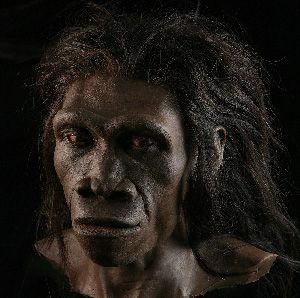'Sugary' Mutation May Have Led to Humans' Rise

A genetic mutation possibly linked to malarial resistance may have helped drive the evolution of the genus Homo, humans' ancient ancestor, a new study finds.
The mutation tweaked one type of sugar molecule, Neu5Gc, produced by early hominids, the first great apes. About 2 million or 3 million years ago, just as human ancestors Homo ergaster and Homo erectus emerged in Africa, a genetic mutation halted the production of this molecule, and the prehuman immune system began to recognize it as a threat. As a result, researchers find, some hominids would no longer have been able to mate and produce offspring with other populations, potentially driving early humans apart from other apes.
"Over time, this incompatibility would reduce and the eliminate individuals with Neu5Gc," study researcher Pascal Gagneux of the University of California, San Diego, said in a statement.
Cells communicate with other cells using sugar molecules that stud the outsides of their membranes. One type of sugar molecule is sialic acid, which is found on all animal cells.
Until about 3 million years ago, the common ancestors of humans and other apes shared Neu5Gc, a type of sialic acid also known as N-glycolylneuraminic acid. Then, something changed. A genetic mutation stopped production of Neu5Gc in human ancestors, possibly because this mutation helped the hominids avoid strains of malaria that still infect chimpanzees today. Instead, human ancestors with the mutation made a different version of the sialic acid, Neu5Ac.
Here's where the immune system comes in: The human ancestor body began to see Neu5Gc as a threat and mounted an immune response against it. That response would have had a major effect on early human reproduction, Gagneux said.
Gagneux and his colleagues tested the idea by exposing chimpanzee sperm, with its Neu5Gc-bearing cells, to human antibodies for the molecule. Sure enough, the antibodies killed the chimp sperm. Female mice engineered to have an immune response to Neu5Gc likewise produced fewer offspring when mated with Neu5Gc-positive males.
Sign up for the Live Science daily newsletter now
Get the world’s most fascinating discoveries delivered straight to your inbox.
In other words, a tiny change in one little molecule could have helped drive populations to diverge from one another, as only Neu5Ac-positive ancestors could mate with other Neu5Ac-positive ancestors, and those human ancestors without the mutation were unable to produce as many offspring.
The researchers reported their findings online today (Oct. 10) in the journal Proceedings of the National Academy of Sciences.
You can follow LiveScience senior writer Stephanie Pappas on Twitter @sipappas. Follow LiveScience for the latest in science news and discoveries on Twitter @livescience and on Facebook.

Stephanie Pappas is a contributing writer for Live Science, covering topics ranging from geoscience to archaeology to the human brain and behavior. She was previously a senior writer for Live Science but is now a freelancer based in Denver, Colorado, and regularly contributes to Scientific American and The Monitor, the monthly magazine of the American Psychological Association. Stephanie received a bachelor's degree in psychology from the University of South Carolina and a graduate certificate in science communication from the University of California, Santa Cruz.











